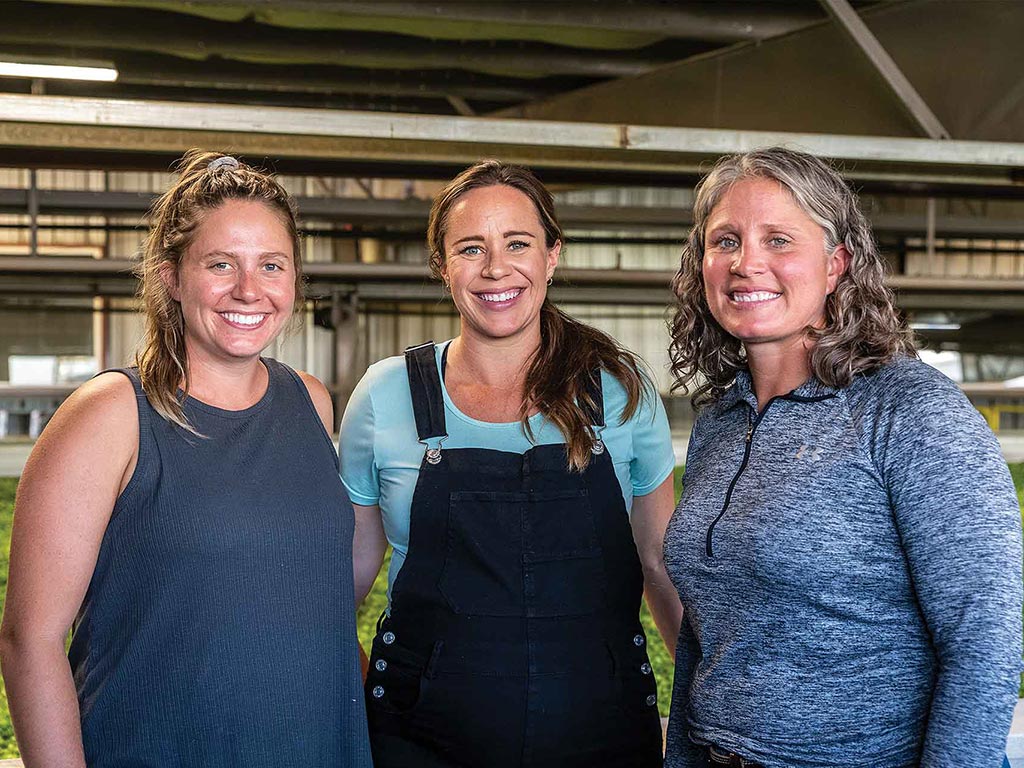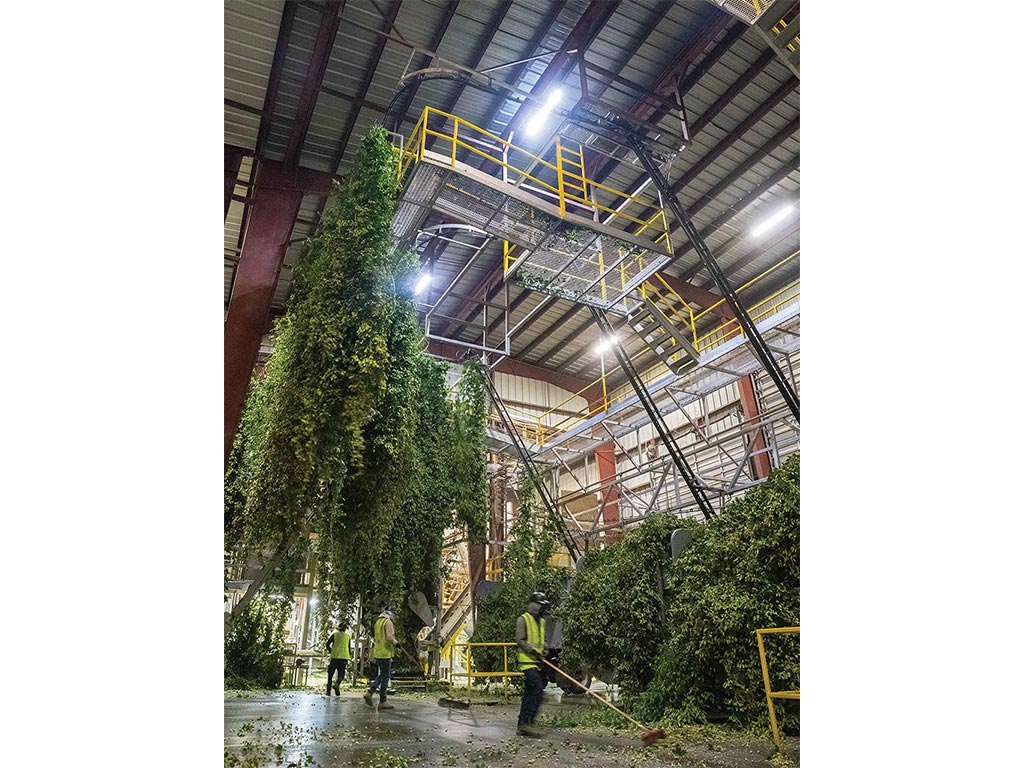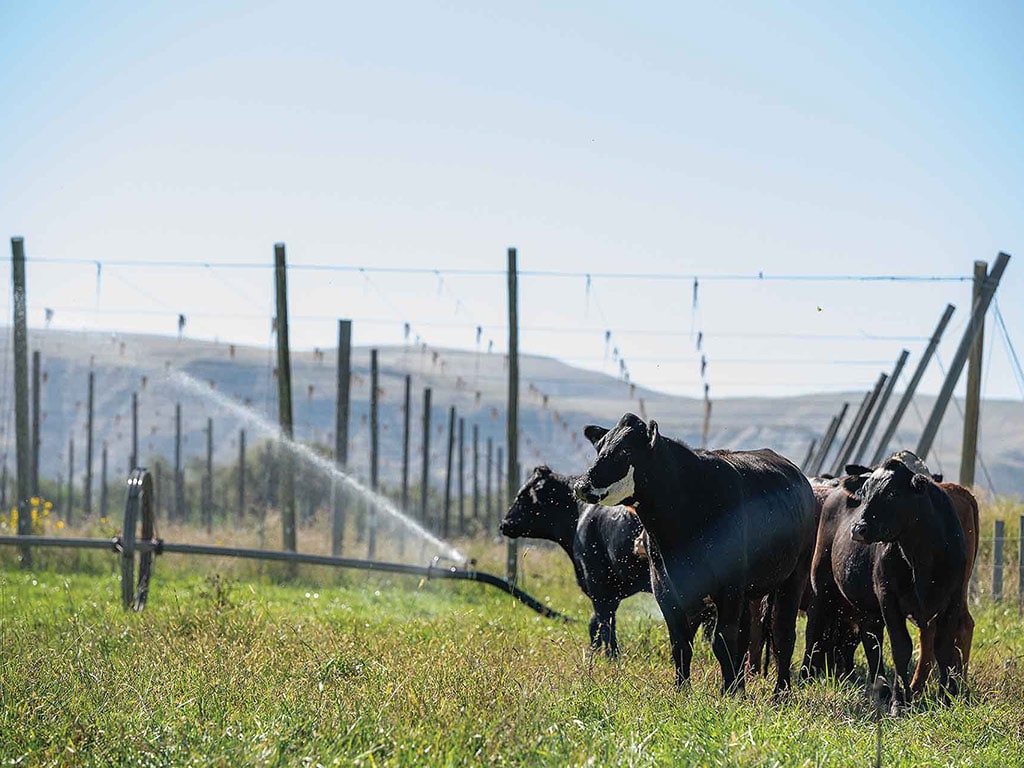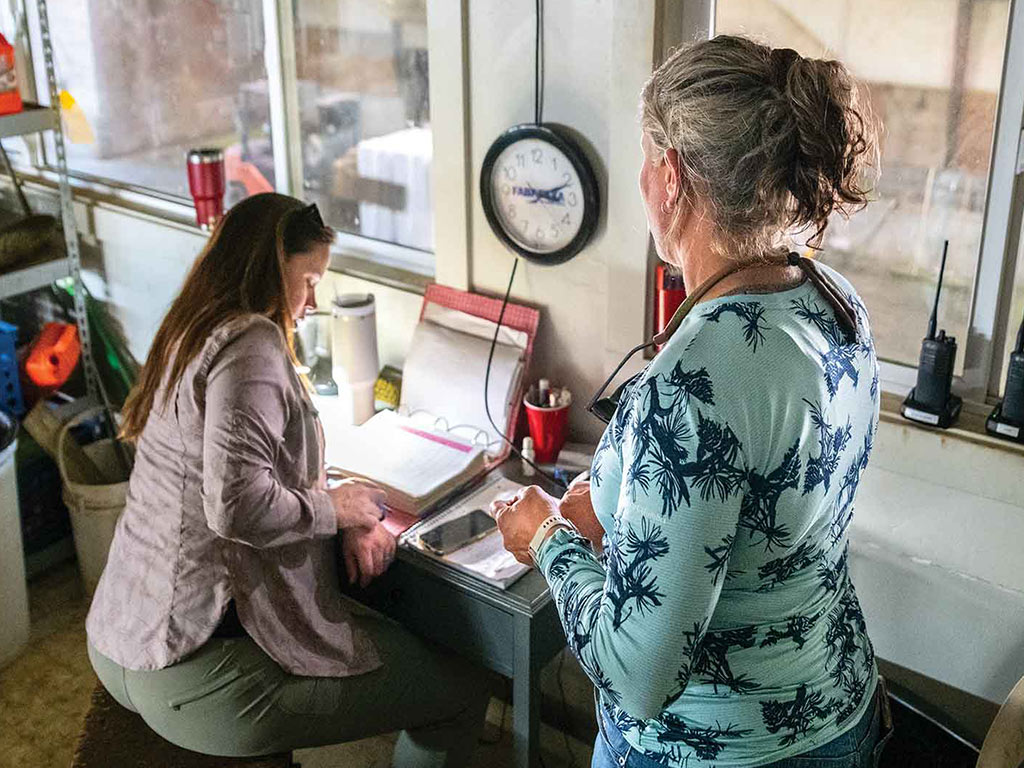Agriculture, Farm Operation April 01, 2024
Good to the Next Hop
Growing for six generations.
by Katie Knapp
The Gooding family has been growing hops for almost 130 years, first in Oregon's Willamette Valley and then since 1945 in Canyon County, Idaho. But other than the hops towering 18 feet into the sky, not much is the same as it was back then.
"My grandfather's grandfather came from Germany and started growing hops in Oregon. He wouldn't even know our farm today. It was all done by hand on small acreage even when my grandfather started growing hops," Mike Gooding says. He took the farm over in the early 1980s as the fifth generation.
The family weathered Prohibition in the 1930s, and then an industry-crippling insecticide killed most of the crop in the 1950s. They endured a down market in the 1980s and a boom in the 2010s.
"I think the next generation always wants to make it their own, to put their stamp on it," says Michelle Gooding, the middle sister of the sixth generation. Each generation of Goodings has taken the opportunity to grow the farm, find new markets, and implement new technologies.
"Grandpa put in a dryer when he took over because Great Grandpa didn't want one. And since Diane and I came back to the farm, we've become the first hop growers in the area to be GlobalG.A.P. certified," she says, knowing her ancestors would be proud of her and her sisters. They have also added solar power and livestock (chickens, beef cattle, and sheep) mainly for the soil health benefits of rotational grazing.
Michelle was the second of her generation to come back to the farm. Her older sister Diane came back in 2010 after her early career landed her in a dark, San Francisco basement designing web pages and contemplating switching into a medical career.
They all had loved growing up "with hops in their blood" as Diane puts it, but none of them saw themselves returning full-time. As Diane was climbing the basement walls looking for some fresh air and sunlight, the hop market was also climbing. Craft brewers were hungry for fresh, local, aromatic hops.
"I asked Dad if he needed help," Diane remembers. He did, and they immediately worked to grow and diversify the farm to meet the new customers' demand and build the operation out to support Diane's generation.
Fortuitously, Diane had become her dad's right hand in enough time to learn most of the ropes when he suffered a spinal cord injury that left him with limited mobility. Diane was able to step up into management, and Michelle joined shortly after.
"I loved the farm but wasn't sure where I could fit in," Michelle says, a Division I athlete with a health science degree and an interest in marketing. "Diane and I are very different and complement each other well. A big part of what brought me back was keeping track of all the paperwork and quality standards and managing sprays, cover crops, and other regenerative things."
A few years later the third and youngest sister, Andrea, came back to the farm. Ten years younger than Diane, she was still at home when Diane came back and could more clearly envision a future for herself on the farm than her older sisters did.
"I wanted to be on the farm. I love it here, and I have always liked growing things," Andrea says. After earning an ag business degree from Oregon State University, she tried her hand working in a plant nursery but decided she was better suited to help her family grow their business.
She started as an official Gooding Farms employee in 2019 as the self-proclaimed "chill one and mediator." She helped wherever she was needed until a year later when the COVID-19 pandemic shown a light on a community need she could help fill.
"We wondered what was going to happen to our food security," Andrea recalls. Their community needed another option, so they built a market.
"Diane and I started plants and grew vegetables. We sold meat from our livestock, and sourced other produce to have enough supply. I am so proud of what we have been able to do. We wanted to diversify more, so creating the market helps us come full circle."
As hop growers though, the market was not complete without some beer. ‘Thirsty Thursdays'—when they set up tables and chairs outside, bring in local musicians, and tap some kegs—has proven that their community was also in need of a place to gather and relax.
"Hosting more events is how I think Red Top Market will move from break-even to profitable," says Mike. The market gets its name from its address on Red Top Road and the bright red canvas waving over the patio, and it now draws locals, tourists passing by, and day-trippers from Boise.
Above. On Gooding Farms south of Parma, Idaho, hop harvest goes around the clock. The bines are cut down from the 18-foot-tall trellises, trucked to the farm where they are hung from a conveyor. The cones are separated from the foliage, routed to the second-story dryer that the three sisters (L to R: Andrea, Michelle, Diane) pose in front of. The yellow gland inside the hop cone is where the oil desired for beer production is found. It takes several workers to keep feeding the system new hop bines all night long and clean up any loose foliage. Michelle says they are already seeing the benefits of integrated rotational grazing after only having a small herd of beef cattle on their land for a few years. Michelle (left) and Diane (right) review harvest progress and determine which variety to pick next. Every step is meticulously tracked, following their certification guidelines. Andrea's husband, Keenan, dances with their daughter, Sophia, during a September 2023 'Thirsty Thursday' at Red Top Market.
COVID hangover. "2023 was the hardest year of my life," Diane says very bluntly. "Even more so than when Dad had his accident or when I went through a divorce. I would rather just grow hops, but that is just not viable."
When Diane, then Michelle, and even Andrea came back, the farm was in growth mode. They added hop acreage and grew a small amount of row crops on fields that needed to rest. But 2021 and 2022 brought poor growing conditions as well as demand decreases because the craft beer market took a hit from the pandemic.
"It is really challenging to grow a good crop with more than 30 days over 100 degrees, and we only have so many chemistries to use on hops shipped worldwide," Diane explains. "With the market change, we saw a huge shift away from aroma hop varieties towards alpha varieties. I had to find new customers for what we have grown."
With the reduction in hop contracts—some of which didn't come through until almost planting time—the family and their team scrambled to decide what to plant under the empty trellises.
"Because of our GlobalG.A.P. certification, we were able to grow some fresh produce, starting with sweet corn and bell peppers. And we were able to get some specialty contracts for carrot seed, bean seed, and buckwheat seed," Diane says, in a way that airs the stress of the season. "To determine what would make the best 'tenant crop' was a multifaceted decision and also a lot of shooting from the hip because of timing. What would make the most money or, rather, lose the least?"
Diane called her dad back in to help manage all of the new crops.
"When I started in the 1980s we had 750 acres of hops and then went down to 212. I grew just about everything the valley has to offer back then on the majority of our acres," Mike explains. "One of the tricky things now is fitting a new crop with our labor pool. They are busy in the spring and early summer stringing and training the hops. We needed crops that would need labor after the middle of June."
While Diane was finding customers, Mike spent the season teaching the large crew of H2A visa workers (many of whom have worked for their farm for years and know hops very well by now) how to properly tend to new row crops and produce.
"They learned very quickly, and we will be in much better shape moving forward," Mike says, very glad he is nearly fluent in Spanish. "The other challenge was that we didn't have enough of the right equipment. We were changing row spacing once a week."
Looking forward, Mike believes the farm is set to continue successfully on into the next generation. "I see the girls being able to do it all on their own in the not-too-distant future, which makes me feel great. I feel I have been successful as a father, as a teacher, and as a business leader," he says as he transitions the conversation to bragging about his newest granddaughter. Michelle welcomed Blaire Marie to the family after harvest was complete. ‡
Read More
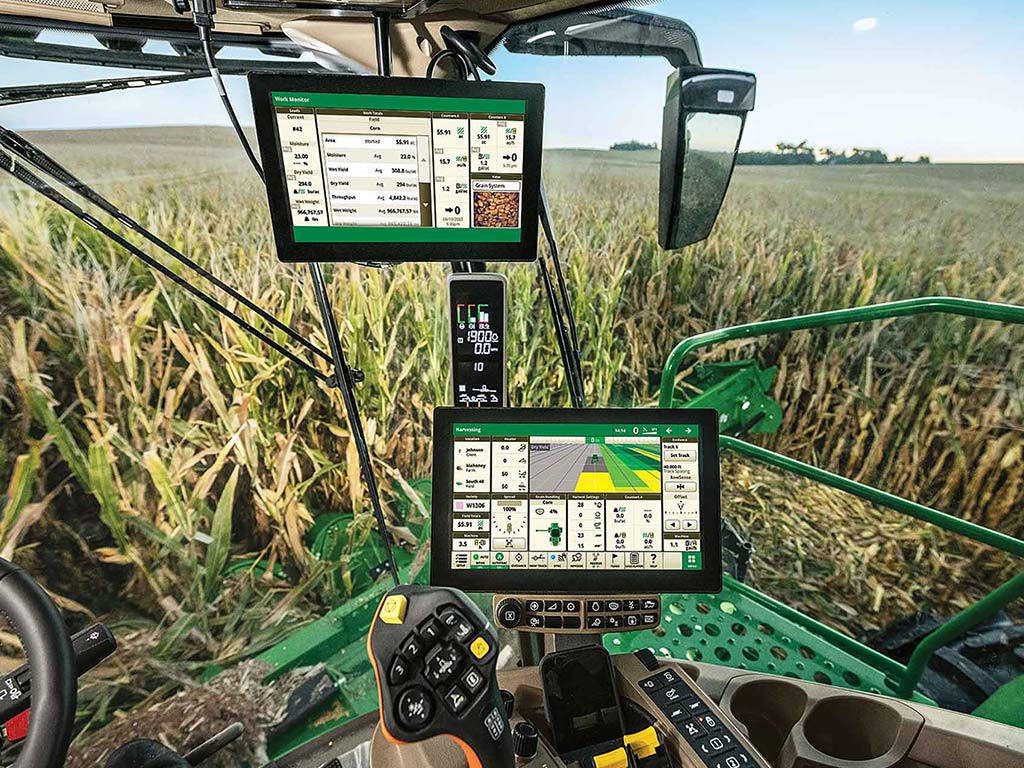
AGRICULTURE, SUSTAINABILITY
Tech@Work
Growing more with less—the power of data.

AGRICULTURE, EDUCATION
SCN Slayers
How scientists are developing new ways to beat this billion dollar pest.



